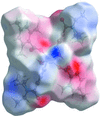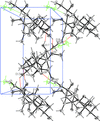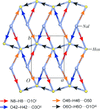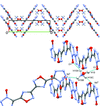issue contents
April 2018 issue

Cover illustration: ![[pi]](/logos/entities/pi_rmgif.gif) -Conjugated molecular materials with fused rings are the focus of considerable interest in the emerging area of organic electronics, since the combination of good charge-carrier mobility and high stability may lead to potential optoelectronic applications. The observed band gap of 3.03 eV for the compound (E)-1,3-bis(anthracen-9-yl)prop-2-en-1-on is in excellent agreement with that (3.07 eV) calculated using density functional theory (DFT) at the B3LYP/6-311++G(d,p) level. The Hirshfeld surface analysis indicates a high percentage of C
-Conjugated molecular materials with fused rings are the focus of considerable interest in the emerging area of organic electronics, since the combination of good charge-carrier mobility and high stability may lead to potential optoelectronic applications. The observed band gap of 3.03 eV for the compound (E)-1,3-bis(anthracen-9-yl)prop-2-en-1-on is in excellent agreement with that (3.07 eV) calculated using density functional theory (DFT) at the B3LYP/6-311++G(d,p) level. The Hirshfeld surface analysis indicates a high percentage of C H/H
H/H C (41.2%) contacts in the crystal. See: Zainuri, Razak & Arshad [Acta Cryst. (2018). E74, 492-496].
C (41.2%) contacts in the crystal. See: Zainuri, Razak & Arshad [Acta Cryst. (2018). E74, 492-496].
research communications




































































 journal menu
journal menu



















































